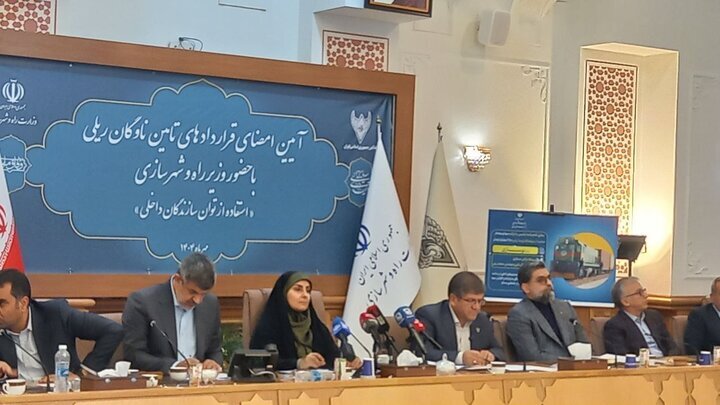Private sector to invest $290m in Iran’s rail fleet modernization

TEHRAN – Two Iranian companies have signed investment contracts worth 145 trillion rials (about $290 million) to modernize and build railway rolling stock, in a deal signed in the presence of Transport and Urban Development Minister Farzaneh Sadegh and the head of Iran Railways, Jabbar-Ali Zakari.
The investment aims to upgrade the country’s rail transport capacity, support domestic manufacturing, and reduce reliance on imports.
Under the agreements, one company will allocate 120 trillion rials ($240 million) to the construction and overhaul of 40 heavy locomotives, 37 passenger locomotives and four Siemens locomotive engines. The second company will invest 25 trillion rials (about $50 million) to refurbish 50 passenger coaches.
Officials said the program is part of Iran Railways’ broader strategy to increase rail’s share in freight and passenger transport while strengthening local production capabilities.
The investment comes amid a wave of private-sector collaboration across the rail sector. In April 2025, Iran signed $750 million in memoranda with private firms to expand both its passenger and freight capabilities. One deal targets 600 tank wagons, 300 DMU cars and 50 locomotives, while another involves 650 bulk wagons.
More recently, in July, Iran’s Railways signed a $176 million agreement to upgrade passenger rolling stock, including the purchase of new “five-star Royal” cars and refurbishment of existing wagons with Raja Rail and Rail Tarabar Saba.
These investments align with Iran’s broader ambitions to scale up rail transit. The country aims to carry 8.0 million tons of goods via rail transit this year, up from 5.0 million tons last year, and ultimately boost annual transit capacity to 40 million tons.
If fully realized, the $290 million investment will become a lynchpin in an emerging ecosystem of public–private synergy in Iran’s rail sector — one that leverages indigenous manufacturing, reduces foreign dependencies, and helps meet the ambitious goals of the Seventh Development Plan.
EF/MA
Leave a Comment